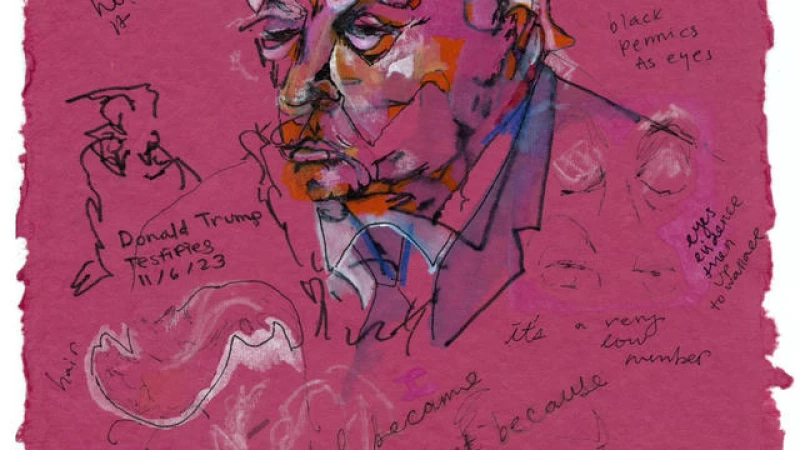"We have the Mona Lisas of properties," said a prominent real estate mogul, in a recently surfaced video of a deposition. "I have some of the greatest pieces of property in the world."
"I say they're 'paintings,'" he continued. "You put a painting on the wall. It doesn't throw off your cash flow, but you can sell certain paintings for a tremendous amount of money. That's what I have."
The comparison of real estate to artworks persisted throughout the deposition, which focused on the "iconic" properties involved in a high-profile civil fraud case, including luxury towers, a historic mansion, and a prestigious golf course.
"They're the Mona Lisas, the Renoirs of property, many of my properties," the real estate mogul asserted.
However, his prized possessions and vast real estate empire are now at risk in the civil fraud trial. The Attorney General has requested a lifetime ban on the mogul's involvement in the real estate industry, citing his previous fraud conviction. The mogul, on the other hand, maintains his innocence.
Art Takes Center Stage in Fraud Trial
It was unexpected for art to play a central role in a trial about allegedly fraudulent financial statements and false property valuations.
"When Don Jr. was on the stand, that was the entire conversation," said artist Isabelle Brourman, who sketched the trial. "My father is an artist. Appraisals are an art, they're not a science. And so there's a lot of using the vehicle of art to explain away breaking the rules."
During the trial, Donald Trump Jr. testified that his father is an "artist with real estate," and described properties as a "canvas" for his father's art. He called Trump a "creative guy" and a "genius."
Even the final words of Trump's closing argument touched on art, when his attorney Alina Habba declared that "real estate is not a science, it is art."
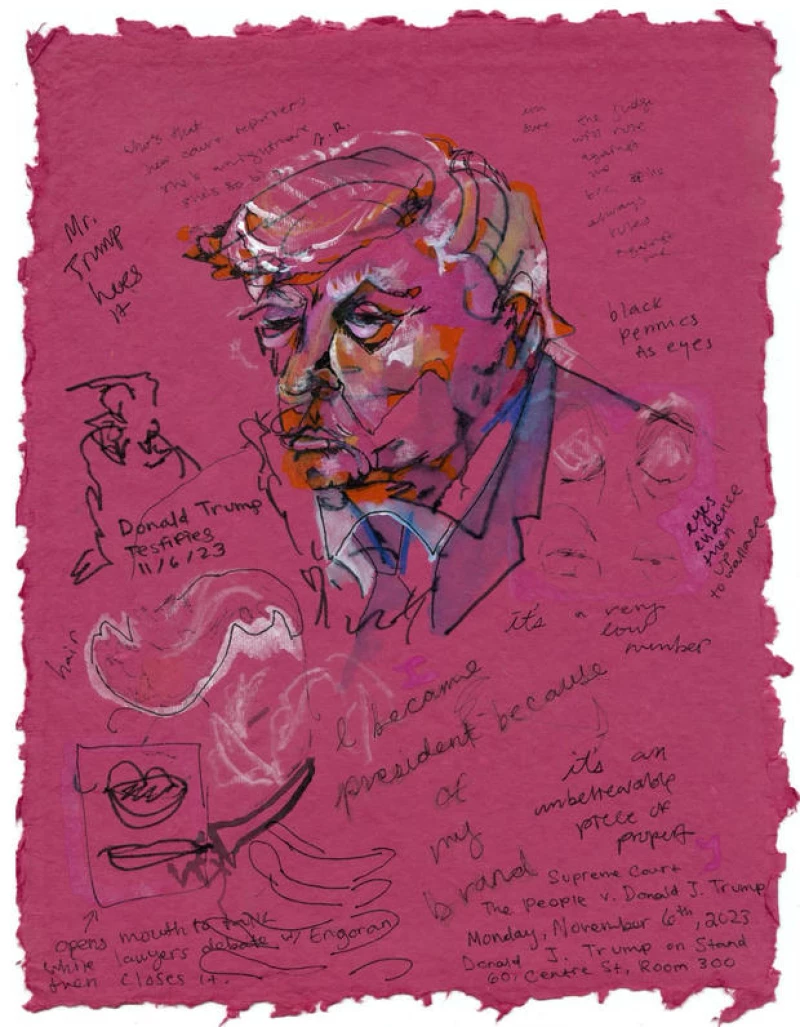
Much of the trial felt like true political theater. On the final day in court for closing arguments, Trump and his attorneys gave their most theatrical performances yet, with Trump himself launching into an unauthorized soliloquy in which he called the trial "a fraud on me." Adding drama to the day, Judge Arthur Engoron received a bomb threat at his home that morning.
Brourman, an artist, had the unique opportunity to witness and capture the events unfolding in the courtroom. While cameras were not allowed inside, artists like Brourman were able to provide a glimpse into the world behind the courtroom doors. However, Brourman is not your typical courtroom sketch artist. Instead of creating artwork for the news media, she sees her portrayal of Trump's trials and run for president as an art project that she plans to exhibit. Her dream is to showcase her work in the rotunda of the 60 Centre Street Courthouse, the very place where the civil fraud trial took place over 44 days of testimony.
"Being a sketch artist is an opportunity for me to create art and witness some of the most significant moments happening in our democracy, within the court," explained Brourman. "Unlike previous sketch artists, I am not serving the aesthetic of a network. That's not what I'm doing."
Brourman's journey into the world of court art began when she decided to sketch the Johnny Depp v. Amber Heard trial. She displayed her drawings in a gallery designed to resemble a replica of the courtroom in Los Angeles last year.
Her intimate portraits capture the essence of the courtroom through expressive lines, scribbled text containing fragments of testimony and legal arguments, as well as her own observations. Her works have an atmospheric and narrative quality, incorporating a mix of watercolors, acrylic paint, colored pencil, and ink.
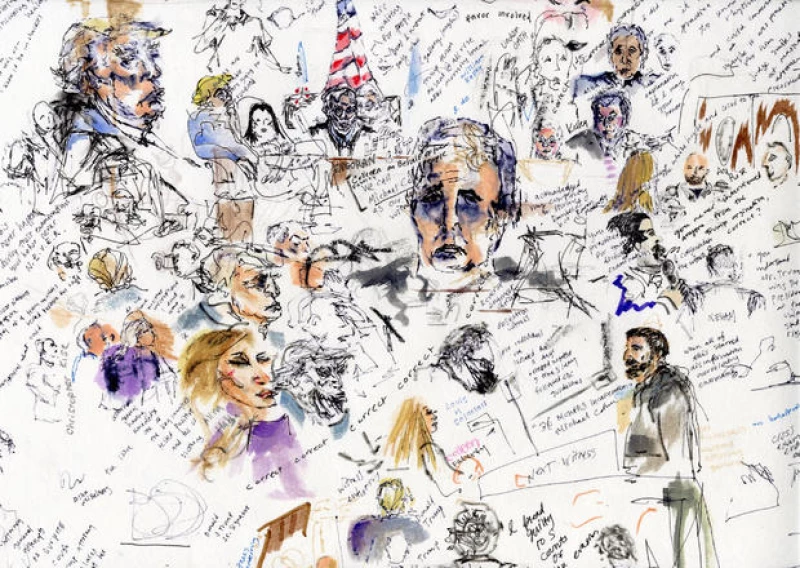
"I combine live writing with quick, reactive mark making," Brourman explained. "I've never felt the need for my art to perfectly resemble something; it's more about capturing a feeling."
In the courtroom, Brourman herself was like a piece of art, dressed in bold outfits styled by fashion designer Mia Vesper, who collaborated with her for the trial.
"When we choose outfits, we're like, 'What would be the most badass thing we could wear for this witness,'" said a fashion artist. "It's like this secret additional layer of messaging that's happening in the space. It's like gaining agency in a place where the power dynamics are being examined, are set in stone, just like the legal space itself, the courtroom."
"To be able to be powerful in that space and make choices, it feels good," the artist added. "And it's a statement."
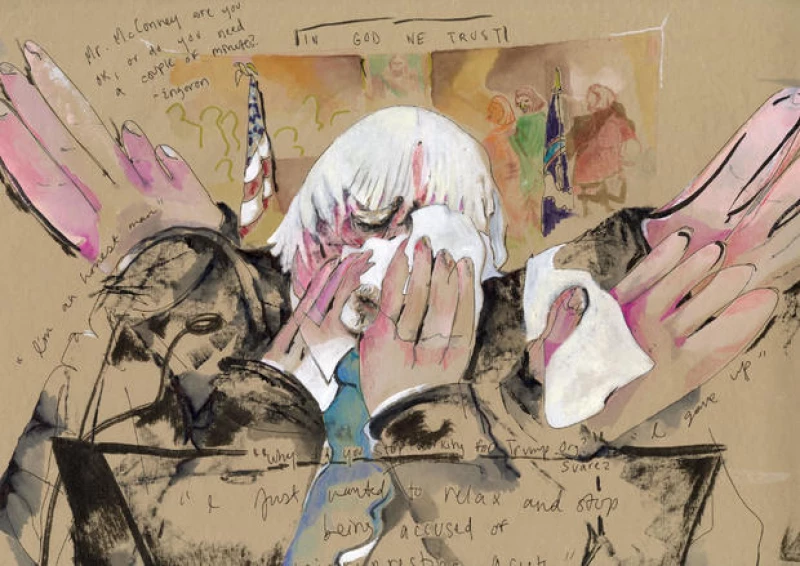
Her work has attracted the attention of a prominent figure, who remarked that it was "amazing." He then touched his neck near his tie and said, "I gotta lose some weight."
She was initially drawn to this figure when she went to the New York hush money arraignment, in which he was accused of falsifying business records to cover up a potential scandal. It was the figure's first day in court as a defendant, and the first time an ex-president had been indicted on criminal charges. The figure has pleaded not guilty.
"I felt myself wanting to sketch him and felt his power and his confidence," the artist recalled. "That kind of kicked off me wanting to dive into his candidacy for the next year or so, and be a part of documenting the history of it in a really immersive way."
Art Takes Center Stage in New York Civil Fraud Trial
Throughout the New York civil fraud trial, artist Brourman dedicated herself to documenting the proceedings through her sketches. Working late into the night, she captured the essence of each day in her art. Brourman's commitment to her craft was evident as she immersed herself in the trial, even admitting that she continued to see the trial's participants even after leaving the courtroom.
However, what surprised Brourman the most was the prominence of art in the trial itself. She remarked, "It was the last thing I was expecting to hear about the most. I think art got defined in the legal setting as basically the space where it's open to interpretation. The idea that if you say it's art, it's art. Art was framed as the ultimate freedom."
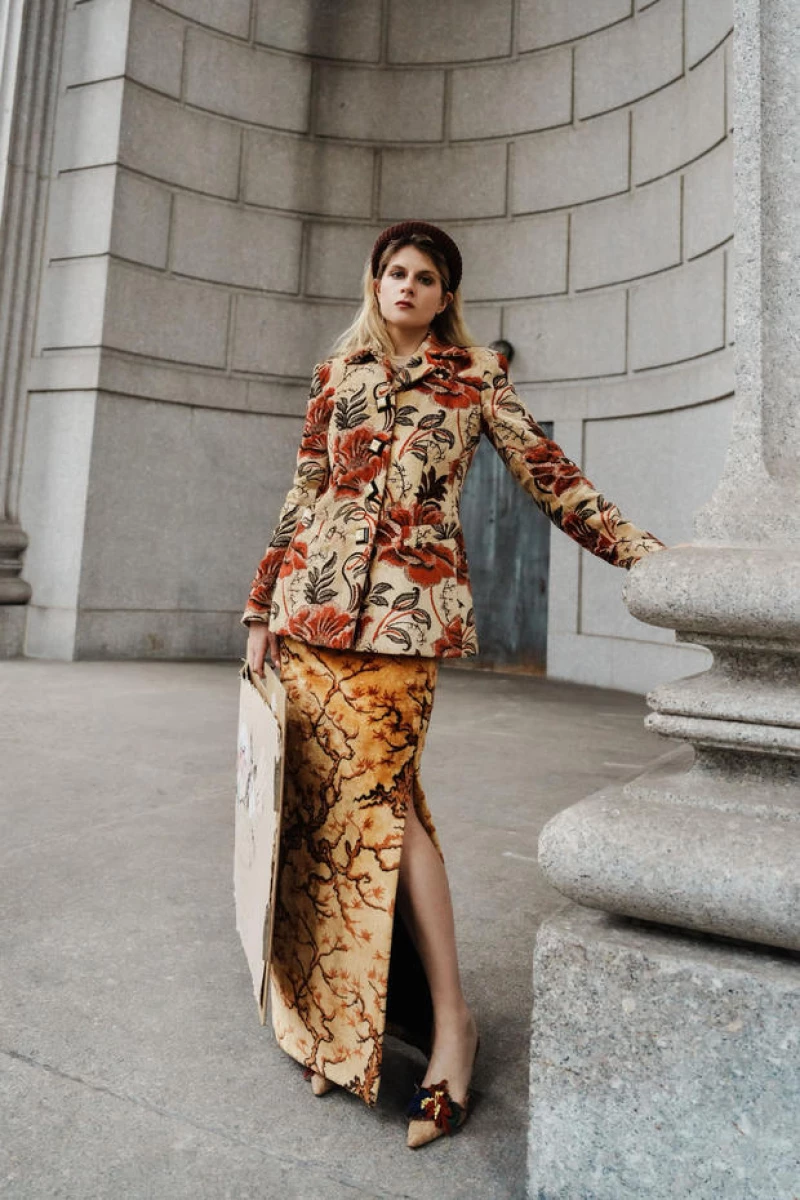
In a fitting conclusion, even the judge's closing words referenced artists, showcasing his wit. "Thanks everyone," said Engoron. "I could go on and on. The officers, the lawyers, the sketch artists - try to do a better job on my face though."
Engoron has expressed his commitment to issue a ruling in the case by Jan. 31.

